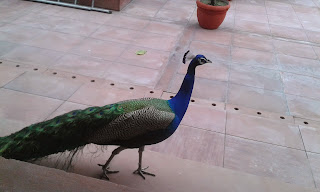Four regional parties – created after coming out of ‘parent’ Congress party – the NCP of Sharad Pawar, Trinamool Congress of Mamata Banerjee, Y Jagan Mohan Reddy’s YSR Congress and Telangana Rashtriya Congress (TRC) of K Chandrashekhar Rao have been in power in as many states.
However, BRS (earlier TRS) lost power to Congress in Telangana and in Maharashtra - NCP and Shiv Sena split. Sharad Pawar has lost relevance of being a permanent PM-potential in the garb of being called Maratha strongman.
Uddhav Thackeray has been marginalised and his latest outcry is a sheer display of desperation.
Things have changed a lot vis-a-vis the political fortunes of regional parties.
So much has been the ‘power’ of regional players that Akali veteran Surjit Singh Barnala almost became the Prime Minister in the mid-1990s. Luck favoured a mofussil protagonist like H D Deve Gowda (of then united Janata Dal) and his colleague I K Gujral, whose 'play safe' card gave him the post.
Even the characteristics of other regional parties – and original claimants to the Third Front - like TDP, Samajwadi Party and Janata Dal – have changed a lot.
The TDP under N Chandrababu Naidu after passing through challenging times in more ways than one is now a 'dependable' NDA constituent.
From token opponents of big brother’ national parties to true representatives of regional aspirations, small or regional parties are certainly more than kingmakers.
They have been wooed by the Left parties and Congress. At times, the BJP is also not far behind ready to strike deals.
Janata Dal (U) of Nitish Kumar is yet again a reliable partner now for the saffron party.
Shiv Sena has paid a heavy cost after having walked away from BJP's embrace in 2019.
In Uttar Pradesh, where assembly polls are due by March 2027, the roles of both the Akhilesh Yadav-led Samajwadi Party and BSP of Mayawati have undergone a sea change.
In fact, Mayawati has gone existential crisis. It faces yet another crucial poll in 2027.
The BSP performance in last few assembly and Lok Sabha polls have been dismal.
 |
| Mamata Banerjee : Still a key regional player |
In West Bengal, Trinamool Congress supremo Mamata Banerjee remains a key player. The BJP could not oust her in 2021 but is determined to give her a stiff fight in early 2026.
In the 2014 Lok Sabha polls, the BSP tally from UP was ‘zero’. In 2024 also she stood helpless. A grand fall for a leader, who only in 2007 brought in social engineering with the Brahmin support base along her Dalit base and had stormed to power in UP.
In the 2009 Lok Sabha polls, BSP admirers were perhaps not wrong to dream that ‘Behenji’ may become Prime Minister.
CPI-M stalwart Prakash Karat had endorsed this view at a public rally. But in politics, nothing is permanent except change. The Congress did unexpectedly well in 2009. In 2014, it was the Moditva phenomenon.
In 2019 just before parliamentary polls, Samajwadi Party stalwart Mulayam Singh Yadav could smell the 'truth' and told Prime Minister Narendra Modi in Lok Sabha that he (Mulayam) was sure that the BJP-led NDA would return to power yet again.
And his words had turned prophetic.
In 2014, the then BJP Rajnath Singh had told me that his party’s alliance with BSP in the 1990s with a six-month power sharing formula was a blunder.
“This alliance had harmed BJP’s prospects in Uttar Pradesh for years. I was one of the few to oppose such a move,” Rajnath had said.
Holding among them 123 seats in the 12th Lok Sabha or almost 24 per cent of popular vote-share, regional parties lived through ‘federalism’ in the real sense as they forged strategic poll alliances either with Congress or BJP, but not compromising their ideologies and self interests.
Of course, the regional parties in general sense did not let the national parties storm their strongholds. DMK is such a powerful example.
This was a healthy development, many thought as it was impossible in India’s vastness to have a system that is highly centralised.
“Either you accept it or learn the bitter way that the roles of regional parties cannot be underestimated,” George Fernandes, then the Samata Party chief, had said in the 1990s.
Likes of George Fernandes and even his compatriot, Nitish Kumar, used to say that regional representations could in effect bring decentralisation in real sense.
They will be again in focus.











No comments:
Post a Comment